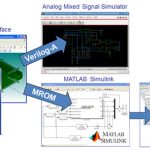I’m not a financial guy, as I have mentioned before, so let me just make some comments on the technology discussed on today’s conference call. Please note that the Chairman Dr. Morris Chang was on the call which is probably why the TSM stock went up more than 8% immediately after. Of course there was plenty of good news to go along with it but having Morris on the call definitely added market confidence, my opinion.
The biggest number I noticed was that advanced nodes made up 51% of revenues meaning 28nm and 20nm. TSMC predicted a quick 20nm ramp with Q4 2014 revenues at 20% of the total which quite a few people did not believe. Well, 20nm came in at 21% so congratulations to all who made that possible. TSMC stated quite clearly that they expect a similar ramp with 16nm this year and it is very hard to doubt that. 20nm is expected to contribute 20% of the total revenue for 2015 so it may be a much longer node than expected.
TSMC is raising CAPEX again to about $12B which is a 25% increase. 80% of it is for advanced nodes (28nm, 20nm, 16nm, and 10nm). Intel on the other hand is reducing CAPEX from about $11B to $10B putting them third behind Samsung and TSMC. Morris reiterated that TSMC builds fabs based on customer orders unlike others who build fabs on speculation only to find them empty. Just a guess here but that is probably a reference to Intel and the empty Fab 42.
TSMC finished the year with a 27.8% revenue growth compared to 18% in 2013. Lets call that the “Apple Factor”. Last year Morris predicted 5% growth for the semiconductor industry 10% growth for the foundry industry and said TSMC would outperform them both. Indeed. This year Mark Lui predicts that the semiconductor industry will grow 5% and foundry revenue will grow 12% with TSMC outperforming them again.
In regards to 10nm, qualification is still scheduled for Q4 2015 with production silicon in 2017. My guess is that 10nm will be here in time for the iPhone refresh in the fall of 2017, absolutely. 10nm is going to be an interesting node but more on that later.
28nm continues to grow due to mid to low end 4G smartphones. You can probably thank Xiaomi for that since they use 28nm Snapdragons. QCOM is an investor in Xaiomi so that will probably not change anytime soon. TSMC continues to optimize their 28nm offerings and feels that they will be able to defend their dominant position with which I agree. C.C. Wei also siad in her prepared statement that 16nm production started in Q3 2014 with meaningful revenue scheduled for Q1 2015. My guess was first 16nm revenue will be reported in Q2 2015 and based on the Q&A session I will stick with that.
I had to see the Q&A session in print before I commented because it was probably one of the more confusing ones I have heard/read. I don’t know who transcribes these for Seeking Alpha but they could do a better job for sure. And the analysts need to do a much better job preparing. Take a look at the transcript and let me know what you think in the comments section. The question about the server market was interesting but here is my favorite exchange:
Roland Shu – Citibank
Yes I think maybe I should rephrase my question —
Morris Chang– Chairman
Why do you have to rephrase your question all the time?

